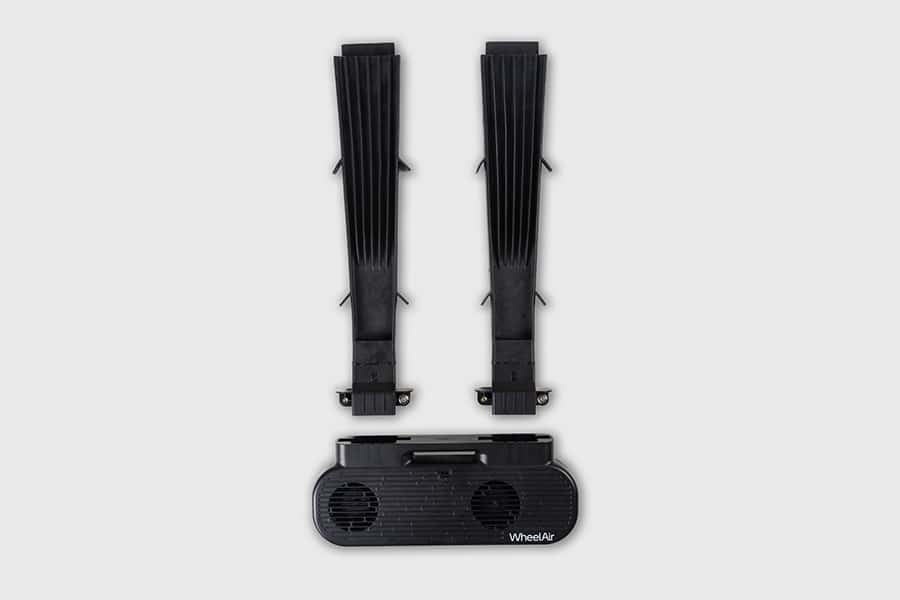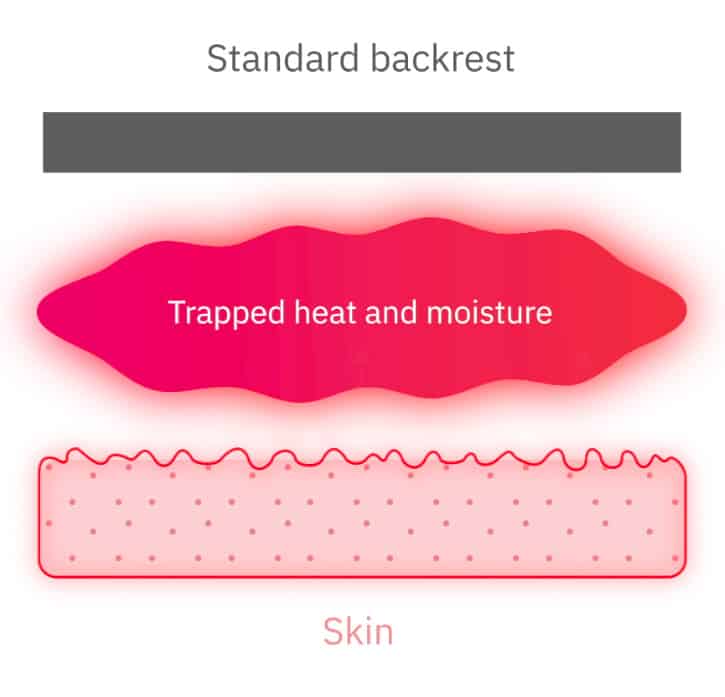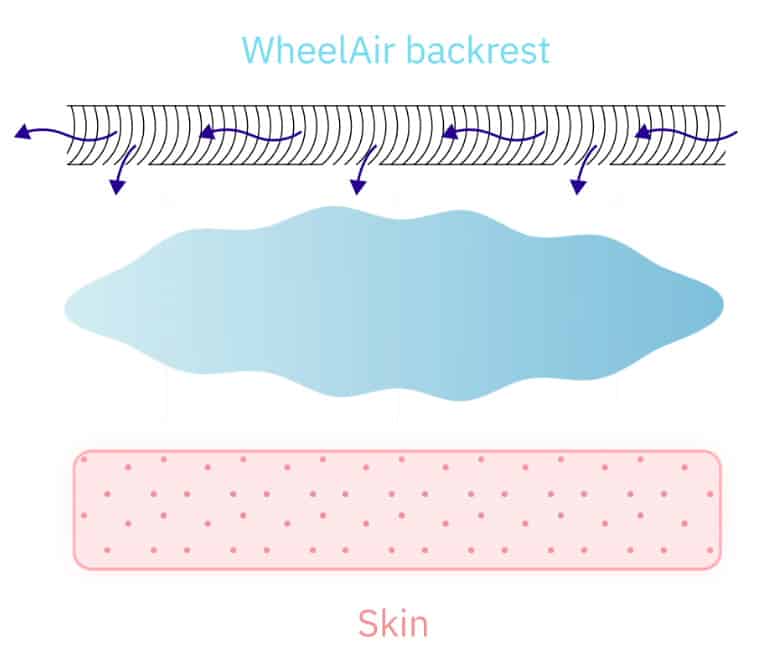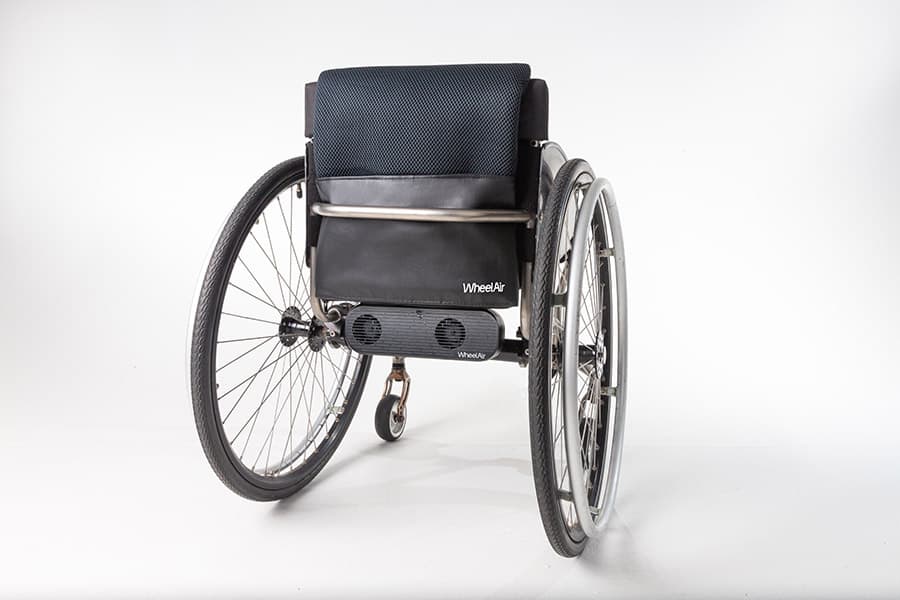A conversation with Susie Turnbull, WheelAir Clinical Educator and OT

As an occupational therapist, I have a passion for enabling people to live fulfilled lives and empowering them to realise their potential. OTs have a solution-focussed and problem-solving approach and aim to reduce barriers to participation and function in an individual’s daily life.
We teach new skills and help build knowledge, as well as provide more practical solutions to a problem that someone may be facing.
Throughout my career, I have come across many problems and have managed to work towards or identify a solution. Though more recently, in both my personal and my professional life, I noticed an understated problem that did not appear to have a very robust solution. When living and working with spinal cord injury, it became quite clear that the consequences of impaired temperature regulation were quite profound and impacted daily life activity decisions and health. I was beginning to learn of the impact that temperature control had on individuals and how much we, as able-bodied persons, take it for granted.

The solutions that we were using for situations of overheating were fans by the bedside, retreating to a cool space, or using water sprays and ice packs. While they had some effect, they were impractical and lifestyle-limiting. Additionally, the use of water sprays is dangerous to the skin as it causes dampness and subsequent risk to skin injury.
I was working with a client who struggled with overheating and sweating as his body was not able to compensate for the heat gain. He would not be able to sit out and he had several changes of clothes a day. He also had a lot of pain. This was causing him to lose independence and reduce his participation in his daily activities. He also became depressed and anxious about the pain and sweating.

This experience reiterated the impact that impaired temperature regulation has on wellbeing and health. He no longer needed to change his shirt as he was no longer sweating, his skin was drier and less red and irritated, he had less pain and felt much brighter and motivated to go about his day. He did not have to retreat into another room or avoid going outside on sunny days. He finally began building his garden.
I was very pleasantly surprised at the benefits this had and how he had gained a new lease of life and independence. It made me think of this understated problem that many wheelchair users – not just people with spinal cord injury – have. As therapists, we are always looking to address the holistic needs of the person and find it very difficult when there is no real solution.
The WheelAir offered a practical, versatile and achievable solution, and one that hasn’t been available before now.
I was keen to get involved in helping open the conversation about temperature control and how we can help manage it and enable people to live their lives on their terms and remove barriers to their wellbeing. I am now the clinical educator at WheelAir and I am thrilled to be able to spread the good news about how we can help with issues related to temperature control.
So what is WheelAir?
WheelAir is the first temperature control system designed to fit any and all wheelchairs. Through convection, conduction, and evaporation heat loss, WheelAir allows the user to self-regulate their body temperature while also positively influencing their microclimate management. Non-intrusive, adjustable, and silent airflow guides heat and moisture away from the body, leaving the user feeling dry and fresh.
The WheelAir system integrates seamlessly into all wheelchair seating systems, including slingbacks, rigid backs, powerchairs, and custom moulded seating.
What are some of the issues WheelAir solves?


The three main issues WheelAir addresses are overheating, over-sweating and microclimate.
Wheelchair users can have difficulty in managing temperature, often as a result of their physical condition, but also compounded by seating systems that lack ventilation. Whilst seated, there is a build-up of heat and moisture on the seat/back contact areas. If using a normal wheelchair backrest cushion, after 30 minutes of use, the user’s back temperature will, on average, have risen by 2.2˚C or a 6.9 percent increase. This creates a microclimate that compromises skin integrity due to the heat and moisture buildup and the process of maceration occurring and its effect upon tissue structures and their ability to withstand forces such as friction and shear against the seat/back surface. This can lead to pressure injuries and moisture-related skin damage, as well as the other systemic effects that overheating and sweating causes such as discomfort, ill health, and care needs. We have worked with individuals that suffer from heat-induced seizures, muscle spasms, heat stroke, and other severe health issues.
Through active and controlled airflow, WheelAir positively influences microclimate, reducing skin temperature and by providing the tools for heat and moisture exchange at the support surface that are otherwise occluded from such processes. Airflow assists in maintaining skin integrity by reducing the risk of heat and moisture associated skin damage by keeping skin cool and dry. When turning the WheelAir on, within three minutes, the user’s back temperature on average has decreased 2.4˚C. Using the WheelAir a further 27 minutes – so 30 minutes in total – lowers the back temperature on average 8˚C.
How does WheelAir impact wheelchair users?
The inability to regulate one’s body temperature has profound impacts on individuals who struggle to manage overheating and over-sweating. While it’s incredibly important to emphasise the potentially severe consequences of these issues, like heat stroke, heat seizure, pressure sores, muscle spasms, and exhaustion, there is also an emotional and lifestyle toll.
WheelAir works with a diverse range of individuals, each with their own unique needs for seating systems and cooling solutions. For example, we worked with Jamie and his carers to provide a solution to help manage his complex needs related to overheating. Overheating is a trigger to Jamie’s seizures. The fact that Jamie cannot bear weight means he spends his time either in his wheelchair or in bed. He gets very hot and clammy sitting in his wheelchair, which brings on his seizures. Overheating also exhausts him. If he is too hot, he cannot participate in vital physiotherapy sessions. So if his temperature is not well managed, he misses out on the few activities he does to keep him healthy.

Additionally, becoming clammy and sweaty leads to itching, scratching, flare-ups, and open wounds, which prevents him from attending hydrotherapy. To keep him cool, his environment is air-conditioned and he has to wear appropriate clothing. These solutions work as long as he remains indoors. However, when it is warm outside, he cannot go on day trips to the seaside or the park for picnics.
With WheelAir, he has experienced reduced heat rash symptoms and has much more energy. Amazingly, since getting the WheelAir, he has not had to cancel any of his activities because of a heat-induced seizure and has been actively participating in his therapies. He itches and scratches less as well, no longer having to take antibiotics to manage his skincare. He does not have flare-ups anymore, either.
WheelAir can also have a positive effect on the care demands an individual requires. During a 12-month study performed by NHS Guy & St Thomas Wheelchair Services (King’s College), WheelAir was integrated into a custom moulded seating system for an individual with complex seating needs. Raphael has a pelvic obliquity ↑L, scoliosis concave L, reduced L hip flexion (75º), and R posterior rib hump. He also has a large abdominal mass. Raphael has extreme temperature regulation issues and tends to scratch his knees and forehead as well as develop redness on his back. Seating and positioning Raphael have always been challenging as he requires a close-fitting seating system due to his complex seating needs and impingement issues. Raphael’s long-standing issues with overheating and perspiration all year round also prove to be a challenging factor when manufacturing an intimate seating system. He struggled with excess sweating, extreme discomfort, redness and skin scratching, skin breakdown and irritation, and required four t-shirt changes per day, two sling changes per day, and use of pedestal fans and a towel to wipe sweat from his face.

When the WheelAir was integrated into his seating system, Raphael no longer scratched his skin, his skin improved, and he no longer required the fans or towel wipes. Furthermore, he only needed one change per day. The ability to better regulate his temperature improved his quality of life.
Not only do we want to help individuals better manage overheating, over-sweating and microclimate with WheelAir, but the gains in quality of life and care are so rewarding for our team. Overheating, over-sweating, and microclimate should no longer be issues preventing individuals from a fulfilled life.
How can we continue to improve care of overheating, over-sweating, and microclimate for wheelchair users?
OTs look at the bigger picture and assess holistically. Issues related to temperature control can sometimes be hard to address due to the primary need to manage posture, function and skincare. Within seating systems, there is a historical lack of effective options for issues such as overheating and sweating. As a result, these issues can be underestimated and left unattended.

What is so encouraging now is that there is a versatile and effective option for wheelchairs users with the WheelAir product. We can now be more active in our assessment regarding symptoms related to overheating and temperature regulation. This can present with symptoms such as light-headedness, fatigue, sweating, itching, irritability, spasms, difficulty concentrating, even seizures, as well as the effects upon the skin such as clammy skin, redness and risk/evidence to skin injury due to the build-up of heat and moisture in the skin/ seat interface. We can also consider the additional factors of increased care needs due to clothing changes or movement disorders and seizures, avoidance of activities due to overheating, or the need to leave a room or activity/work to take a break.
These symptoms, as an example, are representative of those common to overheating or heat stress and should be thoroughly considered in the assessment and conversations with the wheelchair user. We can all relate to the feeling of being too hot and how important it is that we try and remedy those feelings to feel more in control, healthy and comfortable. The WheelAir is now our tool to afford that temperature control and well-being to wheelchair users.

